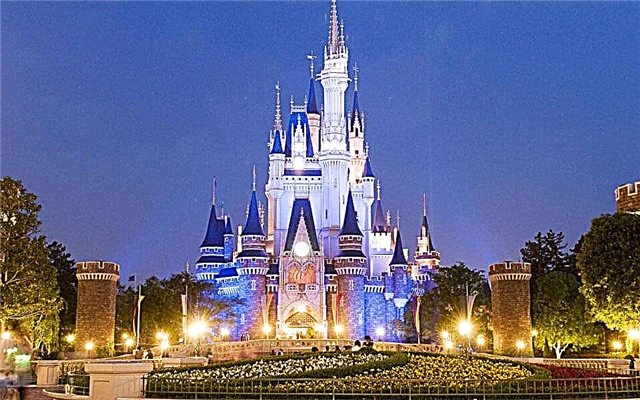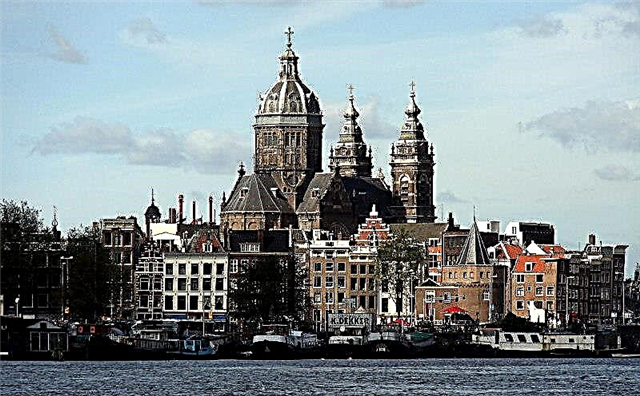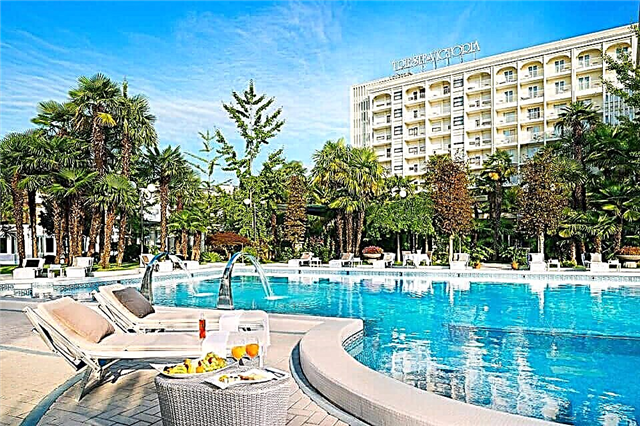Address: Italy Rome
Building: 1811-1822
Architect: Giuseppe Valadier
Coordinates: 41 ° 54'38.4 "N 12 ° 28'34.8" E
Content:
Short description
In Rome, almost every street, avenue or square is a landmark with a long and interesting history. However, among them one can single out the most recognizable square, which was captured on the canvases of the most famous artists, and at the moment is a favorite resting place for the indigenous inhabitants of the capital of Italy and guests of the "eternal city".

Bird's eye view of Piazza del Popolo
Probably, many have already guessed that this article will focus on the legendary Piazza del Popolo. About the square from which the streets of Babuino, Corsa and Ripetta begin and where the legendary Flaminieva road ends. "All roads lead to Rome" - everyone knows this proverb, but not everyone knows that in ancient times everyone got to the capital of the world's greatest empire precisely along the Flaminia road, which, as mentioned above, ends in one of the most beautiful and famous squares in the world. Appeared Piazza del Popolo only in the 16th century AD, although before that time crowds of people always gathered at this place, executions were carried out, and there was an uninterrupted trade.
According to statistics, almost every tourist who comes to Rome to see its sights must visit Piazza del Popolo with its twin temples. Running a little ahead, I would like to note that the two Catholic cathedrals are not exactly the same in their form, but only an architect or a very attentive traveler can consider their differences. The main square of Rome, on the model of which the center of St. Petersburg, Versailles and many other (!) European cities was built, cannot be confused with any other: apart from similar temples in its center there is an obelisk with many hieroglyphs, which was made in Egypt long before the onset of our era. During the reign of powerful pharaohs and before the beginning of the confrontation between Egypt and the great Roman Empire.

General view of the square
The two temples, the legendary obelisk and the history of Piazza del Popolo, of course, are worth dwelling on in more detail. By the way, in addition to the aforementioned sights on the main square, or, as it is often called by guides who conduct excursions around Rome, the "people's" square, there are also a lot of historical and architectural monuments. Piazza del Popolo has "dark spots" in history and even its own ghost, which, fortunately, has already ceased to bother the Romans and guests of the "eternal city" with its horrific phenomena. By the way, the square was called popular not even because it was a meeting place for the townspeople, but, most likely, in honor of the church of the Augustinian Order of Santa Maria del Popolo, surrounded by a huge number of poplars. In Latin, which is currently considered "dead", both poplar and the people sound the same.
Piazza del Popolo: construction of the most famous square in Rome
As mentioned almost at the very beginning of the material, the area that ended on the Flaminia Way appeared only in the 16th century AD. The order for the construction of Piazza del Popolo was given by Pope Sixtus V, who decided to change the face of the capital and lay three large highways in the city at once (Babuino, Corsa and Ripetta). Interestingly, two of these highways also end in squares: Piazza di Spagna and Piazza Venezia. Ripetta Street was supposed to lead the traveler to the mausoleum of Augustus.

Obelisk of Flaminio
At the point where the avenues converged, the architect Rainaldi built two magnificent churches: Santa Maria dei Miracoli and Santa Maria di Montesanto. Surprisingly, even in those distant times, not having computers at hand, a talented engineer managed to achieve the illusion of complete similarity between the two churches. It should be borne in mind that the temple of Santa Maria di Montesanto has the shape of an oval, and that of Santa Maria dei Miracoli is the shape of a regular circle.
In fairness, it should be noted that the plans of these two churches were initially identical, only during the construction of Montesanto it had to be somewhat "flattened": otherwise, it simply would not have fit into the existing architectural ensemble. At the same time, it is rather difficult to find differences in the two churches, they look like twin buildings.
Special attention should be paid to the obelisk, which currently rises on the famous Piazza del Popolo. It was brought to the capital of the empire as a trophy from Egypt back in 10 BC, and its age, according to experts, is about 3,500 years! Initially, this huge stele, on which hieroglyphs were applied, adorned the Circus Maximus. As is known from history, "Maximus" quickly fell into decay, only at the end of the 16th century the obelisk was taken out of the ground and its complete reconstruction was carried out.

The churches of Santa Maria dei Miracoli (right) and Santa Maria di Montesanto (left)
The work on the restoration of the monument of ancient Egypt, which praised the deeds of the pharaohs Set I and Ramses II, was led by the architect Fontana. At the direction of the Pope, he erected an obelisk in Piazza del Popolo. According to some documents that have survived to this day, it can be assumed that Fontana also made an exact copy of the obelisk. Where she is at the moment, alas, is not known for certain. On the square stands the original, the age of which was accurately determined by modern scientists.
Piazza del Popolo: a short tour of history and modernity
The view in which a modern resident of Rome and a traveler who came to the capital of Italy can see Piazza del Popolo, the main square of the city received relatively recently - at the beginning of the 19th century. From 1811 to 1822 the greatest architect Valadier supervised the work to connect the square with the Pincho Hill (on which the Borghese Gardens are located) and the famous Napoleon's staircase. Almost in the middle of Piazza del Popolo rises the very ancient Egyptian obelisk, considered one of the highest sights of Rome: the height of the stele slightly exceeds 36 meters. In 1824, it was decided to surround the trophy of the Roman legionnaires with a magnificent fountain, representing four formidable lions, from whose mouths life-giving moisture flows.

Fountain Neptune
Until 1826, death sentences were constantly carried out in one of the most famous squares in the world. They say that the souls of people killed here still cannot find peace: their ghosts often fall into the lenses of digital cameras. Speaking of ghosts ... A very terrible legend is connected with the place where Piazza del Popolo is now located. It was here that the body of one of the most terrible people in the entire history of mankind, the Emperor Nero, was buried. The same Nero, who enjoyed torturing innocent people, and the very emperor who decided to burn down the "eternal city". Many considered him a fiend of hell, as legend has it, the ancient Romans were not mistaken. Demons were often seen at his coffin, and the ghost of Nero himself terrified the local population. This terrible story ended thanks to the intervention of Pope Paschal II: by his decree, the remains of the emperor were removed from the ground and thrown into the river. A temple was built to drive out evil spirits from this place. As you might guess, it was named Santa Maria del Popolo.

Fountain "Rome between the Tiber and Anyone"
At the moment, all horrors and executions are a thing of the past. Nowadays Piazza del Popolo is one of the most popular places in Rome.At any time of the day, you can meet a huge number of tourists and Romans here. During the day, it is pleasant to relax here by the famous fountain, admire the beautiful gardens hanging over the square from the Pincho hill, and enjoy the view of the cascade, built in 1936, which receives water from the ancient aqueduct. In the evening, Piazza del Popolo looks like a fantastic place, enveloped in a mystical atmosphere. This visual effect was achieved through the installation of a unique, beautiful backlight.











